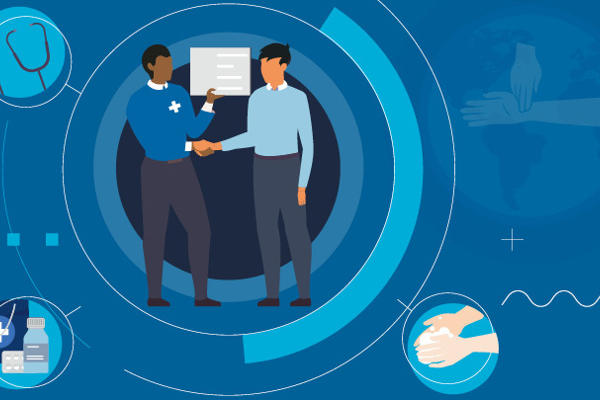As part of our week-long series on the crucial role that clinical research plays in the NHS Simon Constable FRCP, chief executive, Warrington & Halton Teaching Hospitals NHS Foundation Trust talks about the benefits of clinical research on district general hospitals.
There is an increasingly compelling case for NHS organisations to become ever more research and innovation active. Patient outcomes are better, either directly or indirectly. Clinicians feel better, and organisations do better as a result, not least of which through the ever important lens of our regulator, the Care Quality Commission.
Improvement is very much the name of the game – for individuals, teams, services and the trust as a whole. This is before you address the potential positive impact on the wider health economy and community.
The challenge for all of us in leadership roles is making sure we enable research to happen through appropriate resourcing given the many compelling competing demands we face, alongside the “day job” which gets busier all the time.
This is clearly a question of priorities, but how many priorities is it reasonable to have? We need to think a little more differently about capacity – “instead of” not “as well as”.
The natural advantages for district general hospitals
District general hospitals have been cornerstones of the NHS since its inception but have not necessarily been the most research-active organisations, that of course being the natural domain of the university teaching hospitals. However, we are definitely not short of patients, often in areas of greatest need where health inequalities are prevalent. Many more of them would be willing to participate in research if asked – an untapped resource for the NHS.
Nor are we short of clinicians, including trainees, who would be willing to do this research if given the space, time and recognition. Many find activity like research and education away from direct patient care a rewarding and helpful addition to the time they spend on the frontline. A variation in portfolio, either cyclically or sporadically, can also help build resilience as well as professional development over a career lifetime.
Facing the challenges
Then there comes the difficult part – making it happen, building the capacity and capability for research (and innovation) that is as integrated with healthcare delivery as possible without diverting precious time away from patient care.
Quite rightly there are going to be questions about our productivity. Job-planning cycles are now embedded in the work of the year, as much as appraisals have been for some time. While all of the above sounds great, it can be very challenging to prove the positive link between an investment in research time with good outcomes locally for a specific organisation at a particular moment in time.
This is especially true for leadership teams and their respective finance committees, when all are constantly balancing the imperfect challenges of quality, finance and operational delivery. More so when clinical backfill might only be able to occur through premium pay spend, including agency cover.
The expertise of the wider education, research and innovation infrastructure is going to be invaluable here. Whether through NIHR, the Royal Colleges or agencies like the Innovation Agency and other academic health science networks, these resources are as much untapped potential as the patients and clinicians described above. Advice, guidance, investment, case studies – all could help make that leap from theoretical to the practical. The “nice-to-do” becomes the “must do”.
On Thursday 28 November, the RCP launched Benefiting from the research effect, outlining how NHS trusts can support clinicians to become more research active and the benefits this will realise.




